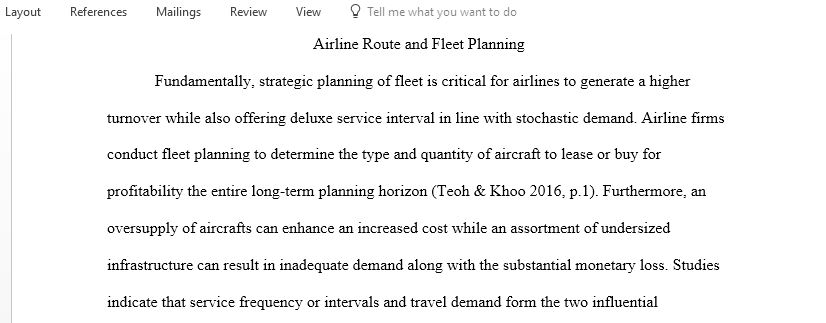Airline Route and Fleet Planning
Airline Route and Fleet Planning
1. Make rational choice in aircraft selection
2. Demonstrate an understanding of the global economics underlying fleet planning according to the market, constraints and airline’s need
3. Compute data in order to successfully carry out fleet planning analysis
Task:
You are the fleet planner of a start-up airline, which will operate one new route in Year 1 and the following years between city A and City B, distant of 700 km. The first year annual traffic (both ways) is estimated to be 200 000 passengers on the route, for your airline. This is a new route, never operated before.
Your COO (Chief Operating Officer) is hesitant about the aircraft that should be operated by your airline on the route, the first year and then during the next 10 years.
2 aircraft options are being considered: the Bombardier CRJ 1000 regional jet or the Airbus A320, with the following operating costs and configuration (next page):
Questions:
Using the operating and traffic data, suggest to your COO a fleet plan from year 1 to year 10 (40%), stating your assumptions and reasoning in terms of traffic growth (forecast), network, business model and potential competition (40%).
You may use external sources of evidence and examples from industry but must state this evidence clearly in your argument (10%).
Grammar, spelling, general structure and referencing must be correct (10%)
Notes
*1 No passenger charge in this exercise; airport charges same at airport A and airport B
> Yield (Passenger Revenue) per RPK on Year 1: 0.076
> There are no other charges or costs incurred than the charges and costs above
> The standard annual use of a CRJ1000 or A320 would be around 3000 block hours/year for this airline
> BH: Block-Hour
Answer preview for Airline Route and Fleet Planning
Access the full answer containing 2990 words by clicking the below purchase button.

